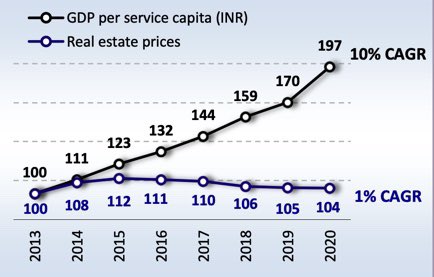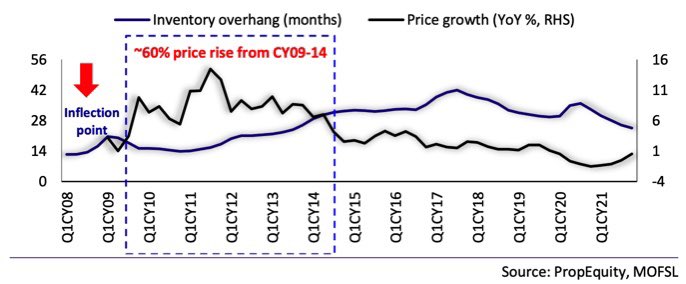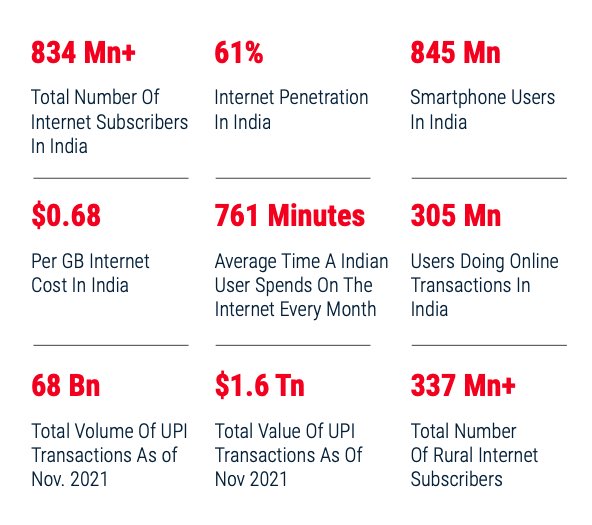
Real Estate : On the Move?
Here’s our Sunday Analysis of the Indian Real Estate Sector.
A thread below🧵🧵🧵👇🏻
#investing #realestateinvestment
@caniravkaria @ishmohit1 @Gautam__Baid @sahil_vi @academy_share
Here’s our Sunday Analysis of the Indian Real Estate Sector.
A thread below🧵🧵🧵👇🏻
#investing #realestateinvestment
@caniravkaria @ishmohit1 @Gautam__Baid @sahil_vi @academy_share

(1/16)
Ready for an Upmove?
Here are some triggers:
• Improved Affordability:
The last spike in Real estate prices came back in 2009-14. After this the prices have remained the same but the Income posted a steady growth of 8-10% CAGR since 2011
Ready for an Upmove?
Here are some triggers:
• Improved Affordability:
The last spike in Real estate prices came back in 2009-14. After this the prices have remained the same but the Income posted a steady growth of 8-10% CAGR since 2011

(2/16)
• A trend of falling interest rates has made it easy to finance homes and thus improving buying sentiments.
• The effective int rate for the first time home buyer is 3.9%
• Gap between Rental yields & Effective rate is 90bp, enticing people to opt for owning home
• A trend of falling interest rates has made it easy to finance homes and thus improving buying sentiments.
• The effective int rate for the first time home buyer is 3.9%
• Gap between Rental yields & Effective rate is 90bp, enticing people to opt for owning home

(3/16)
How Inventory levels affect Rise in Price:
• Inventory level was at around 12-18 months in 2008 which was an inflection point for sharp price hikes that followed.
• Property prices rose by 60% across cities from 2009-14, until the levels went up to 32-33 months
How Inventory levels affect Rise in Price:
• Inventory level was at around 12-18 months in 2008 which was an inflection point for sharp price hikes that followed.
• Property prices rose by 60% across cities from 2009-14, until the levels went up to 32-33 months

(4/16)
• The inventory levels are currently at 23 months which is healthy but not low enough(~15 months) to start having a Price rise.
• As you can see below ~15 months inventory acted as an inflection point for rise in the price of Real Estate from 2009-14.
• The inventory levels are currently at 23 months which is healthy but not low enough(~15 months) to start having a Price rise.
• As you can see below ~15 months inventory acted as an inflection point for rise in the price of Real Estate from 2009-14.

(5/16)
A sharp Demand Recovery:
First half of 2021 saw a sharp recovery in demand. Jan-March 2021 was the best quarter
in the last 5-6 years, with total sales of 72,000 units across the top seven cities.
The impact of 2nd wave was less, which gave the confidence in the industry
A sharp Demand Recovery:
First half of 2021 saw a sharp recovery in demand. Jan-March 2021 was the best quarter
in the last 5-6 years, with total sales of 72,000 units across the top seven cities.
The impact of 2nd wave was less, which gave the confidence in the industry

(6/16)
Urbanisation: Creating Demand
• As per reports, India will need 6.2Cr houses in urban cities to meet the needs of the population by 2030
• Rise in Nuclear family will add another 2.8Cr houses demand by 2030
Urbanisation: Creating Demand
• As per reports, India will need 6.2Cr houses in urban cities to meet the needs of the population by 2030
• Rise in Nuclear family will add another 2.8Cr houses demand by 2030

(7/16)
Can we have another 2008-14 period?
• Same characteristics of improved affordability and lower int rates
• Customers are realising that there is little room for price correction so demand is rising.
• Developers to keep launch discipline by keeping a watch on demand
Can we have another 2008-14 period?
• Same characteristics of improved affordability and lower int rates
• Customers are realising that there is little room for price correction so demand is rising.
• Developers to keep launch discipline by keeping a watch on demand

(8/16)
Three way attack!
• Demonetisation: Affected the flow of investments coming into the sector through developers
• GST : 12% GST on sale of Under Construction Units, which made cost averse buyers not buy these units
Three way attack!
• Demonetisation: Affected the flow of investments coming into the sector through developers
• GST : 12% GST on sale of Under Construction Units, which made cost averse buyers not buy these units
(9/16)
RERA: It brought an end to pre launch sales, meaning developers had to be sure of the viability of the project
• Escrow Account creation stopped cross funding of projects
• Developers are dealt with heavy fines in case of delay in launch
RERA: It brought an end to pre launch sales, meaning developers had to be sure of the viability of the project
• Escrow Account creation stopped cross funding of projects
• Developers are dealt with heavy fines in case of delay in launch
(10/16)
Let’s look at the financial health of 4 Listed Companies:
1) Oberoi Realty
2) DLF
3) Godrej Properties
4) Macrotech Developers (Lodha)
Let’s look at the financial health of 4 Listed Companies:
1) Oberoi Realty
2) DLF
3) Godrej Properties
4) Macrotech Developers (Lodha)
(11/16)
• OBER has the lowest Debt to Equity(0.2), it also has the lowest gross debt amount(₹15Bn)
• Cost of Debt is lowest of GPL(6.7%) & highest of Lodha(11.3%)
• OBER has the best margin profile due to high margin in luxury segment and lower overheads
• OBER has the lowest Debt to Equity(0.2), it also has the lowest gross debt amount(₹15Bn)
• Cost of Debt is lowest of GPL(6.7%) & highest of Lodha(11.3%)
• OBER has the best margin profile due to high margin in luxury segment and lower overheads

(12/16)
• As per Valuations: Lodha and Oberoi Realty currently the most attractive.
• Lodha is offering favourable growth opportunities and Oberoi sales have improved majorly which can have incremental effect on its future project plans and development

• As per Valuations: Lodha and Oberoi Realty currently the most attractive.
• Lodha is offering favourable growth opportunities and Oberoi sales have improved majorly which can have incremental effect on its future project plans and development


(13/16)
Strong footing of listed developers:
• The listed developers are all set to double their pre sales over the next 5 years.
• The market share of top 10 listed players has increased threefold since 2017
• 60% of developers have exited the market since 2017
Strong footing of listed developers:
• The listed developers are all set to double their pre sales over the next 5 years.
• The market share of top 10 listed players has increased threefold since 2017
• 60% of developers have exited the market since 2017
(14/16)
NBFC crisis gave a boost to listed and organised developers.
• The crisis led to lending limitations for unorganised developers.
• The new lending was largely received by big players
• Even now when demand is rising, NBFCs will continue to focus on Top Players
NBFC crisis gave a boost to listed and organised developers.
• The crisis led to lending limitations for unorganised developers.
• The new lending was largely received by big players
• Even now when demand is rising, NBFCs will continue to focus on Top Players
(15/16)
• Listed peers have a better inventory numbers which is around 15-20months
• Due to this and strong demand, they are successful in hiking the price and passing the inflation factor to customers.
• Listed peers have a better inventory numbers which is around 15-20months
• Due to this and strong demand, they are successful in hiking the price and passing the inflation factor to customers.
(16/16)
Key Risks:
• Rising Commodity Prices affecting margins. Even passing the rise in price to customers will have an affect on affordability, which will ultimately impact the demand.
• Interest Rate Hike: Govts across are stepping in to control inflation using tapering.
Key Risks:
• Rising Commodity Prices affecting margins. Even passing the rise in price to customers will have an affect on affordability, which will ultimately impact the demand.
• Interest Rate Hike: Govts across are stepping in to control inflation using tapering.
• • •
Missing some Tweet in this thread? You can try to
force a refresh












